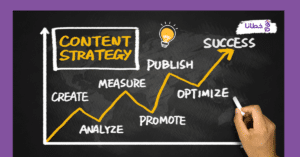Table of Contents
In the fast-paced world of the internet, user experience (UX) is one of the cornerstones of website success. Not only does it influence how visitors interact with a website, but it also plays a crucial role in improving a website’s search engine rankings. In this article, we outline a set of best practices that website owners and designers can follow to ensure an exceptional user experience, which in turn will help attract new visitors, retain existing ones, and improve website performance in search engines. From responsive design to loading speed, from site structure to content quality, every aspect represents a fundamental piece of the UX puzzle we seek to solve.
The importance of user experience in website design
User experience in website design is a key factor influencing a website’s success. Here are some points that illustrate its importance:
1- Search Engine Optimization (SEO): Search engines prefer sites that offer a good user experience, such as fast loading times and responsive design, which leads to improved site ranking in search results.
2- First impression: The user’s first experience can form a lasting impression of the brand, and an attractive website design contributes to building a positive image.
3- Effectiveness and efficiency: A design that makes it easier for the user to complete their tasks effectively and efficiently increases the value of the site and reduces the level of confusion or frustration for the visitor.
4- Conversions: Designing a website that facilitates navigation and access to information increases the likelihood that a visitor will complete the desired goals, such as purchasing or registering.
5- Satisfaction and Loyalty: A positive user experience increases visitor satisfaction and loyalty to the site, leading to increased engagement and continued returns.
6- Transparency and trust: Clear and transparent designs make it easier for visitors to understand services or products, which enhances the visitor’s confidence in the site.
7- Competitiveness: In a competitive market, a superior user experience can be a unique point of distinction for the site compared to others.
8- Use across different devices: As mobile device usage increases, design becomes more attractive.
How Search Engine Optimization and User Experience (SEO) Complement Each Other
Search engine optimization (SEO) and user experience (UX) work together to improve both a site’s search ranking and the quality of user interactions. Here are some ways they support each other:
1- Feedback: UX uses feedback to improve design, and SEO benefits from changes that increase user satisfaction and positive search engine signals.
2- Images and videos: Visual media enriches UX and, if optimized properly, contributes to SEO by improving visibility in search results.
3- Keywords: Using relevant keywords improves SEO, and if they are naturally integrated into the content, they also enhance UX.
4- External links: UX benefits from high-quality links that add value to the user, and SEO benefits from these links to build site authority.
5- 404 errors: UX reduces user frustration by designing useful error pages, and SEO reduces the impact of these errors on rankings.
6- Attractive content: UX focuses on providing useful and attractive content to the user, while SEO improves the appearance of this content in search results.
7- Easy navigation: UX improves the ease of use of the site, and SEO rewards sites with good navigation with better rankings.
8- Certificates and badges: UX enhances user confidence in certificates, and SEO leverages this confidence to improve rankings.
9- Security: UX ensures that the user feels safe on the site, and SEO rewards secure sites with better rankings.
10- Social Networks: UX enhances interaction across social networks and SEO.
It’s worth noting here that there are distinguished companies in this field in terms of providing search engine optimization services, most notably Khutana, a leading company in the Arab world.
Websites need to work well on different devices and screens for the user.
It is essential for websites to work well across different devices and screens for several reasons:
1- Improving user experience: Users use a variety of devices with different screen sizes, and a website design that adapts to these differences ensures a seamless experience for everyone.
2- SEO optimization: Search engines like Google prefer websites that offer a good user experience on mobile devices, and give them a better ranking in search results.
3- Increased access: Responsive design enables more people to access content regardless of their device, increasing the site’s audience.
4- Maintaining competitiveness: In a highly competitive digital world, responsive design is essential to staying relevant and maintaining market share.
5- Integration with marketing: Responsive designs make it easier to integrate digital marketing strategies and ads targeting specific devices.
So, responsive designs are not only an essential element of UX, but also a crucial part of a successful SEO strategy. Also read: 10 Effective SEO Strategies for Your Website
Explaining how responsive design affects search engine rankings.
Responsive design significantly impacts search engine rankings in several ways:
1- Mobile-first: Since Google’s Mobile-First Indexing update, mobile-first ranking has become a priority, and responsive designs help meet these standards.
2- Social signals: Designs that facilitate sharing across social media platforms may lead to an increase in social signals that are taken into account by some search engines.
3- Avoid duplicate content: Instead of creating different versions for mobile and desktop devices, responsive design uses a single URL, making it easier for search engines to understand and index the content.
4- Improving user experience: Search engines value the user experience on a website, and responsive design ensures a seamless experience across all devices, improving rankings.
5- Increase page engagement: Responsive design encourages visitors to spend more time and interact with the content, which gives positive signals to search engines.
6- Speed: Responsive designs are often faster to load, especially on mobile devices, and loading speed is a key factor in SEO ranking.
7- Reduce bounce rate: If the site doesn’t perform well on a particular device, visitors may leave quickly, increasing the bounce rate and negatively impacting rankings.
8- Backlinks: Responsive designs make it easier for others to link to your site, which boosts your site’s authority and improves rankings.
The importance of website page loading speed for user experience and search engine optimization
Website page loading speed is of great importance to both user experience and search engine optimization:
1- User experience: Users prefer websites that load quickly, and long waits may lead to loss of patience and moving to another site, which reduces user satisfaction.
2- Mobile devices: With the increasing use of mobile devices for browsing the Internet, it has become very important that website pages load quickly on these devices.
3- SEO: Google and other search engines use page load speed as a factor in ranking search results, favoring sites with better performance.
4- Improve bounce rate: Fast-loading pages reduce the likelihood of visitors bouncing, which improves the bounce rate and gives positive signals to search engines.
5- Better data usage: Especially in areas with slow or expensive internet connections, fast-loading pages offer more efficient use of data.
6- Conversions: Fast-loading pages contribute to increased conversions, whether that’s increased purchases, newsletter signups, or more.
7- Competitiveness: In a digital market where every second counts, download speed can be a crucial factor in staying ahead of competitors.
Therefore, website page loading speed is crucial in ensuring a good user experience and boosting the website’s position in search engine results.
Tips to increase loading speed, such as reducing image sizes and using content distribution networks (CDNs).

Here are some tips to increase the loading speed of your website pages:
1- Mobile optimization: Ensure that the site works well on mobile devices, as there may be differences in loading speed.
2- Evaluation and monitoring: Use tools like Google PageSpeed Insights to monitor loading speed and get personalized recommendations.
3- Browser caching: Enable caching to allow users to load some resources only once over multiple visits.
4- Reduce the use of JavaScript and CSS: Combine and minify JavaScript and CSS files to reduce the number of requests required to load the page.
5- Use CDN: Content distribution networks reduce response time by storing copies of content in multiple geographic locations.
6- Reduce image size: Use images with optimized sizes and compressed formats such as JPEG or WebP.
7- Use web fonts efficiently: Choose standard fonts or load web fonts selectively.
8- Reduce redirects: Each redirect adds additional waiting time to the page.
9- Use HTTP/2: If possible, use HTTP/2 to improve download performance.
By following these tips, you can speed up website page loading and improve user experience and SEO.
How does having a clear site structure help facilitate user navigation?
Having a clear site structure helps facilitate visitor navigation in the following ways:
1- Indexing: A clear structure that makes it easier for search engines to index website pages, improving search results visibility.
2- Scalability: A well-planned structure makes it easy to add new content without negatively impacting the overall experience.
3- Guidance: Menus and internal links naturally guide visitors through the site, improving the user experience.
4- Accessibility: Designing a user-friendly website encourages visitors to spend more time and interact with the content.
5- Organization: An organized structure that makes it easy for visitors to find the information they are looking for quickly and efficiently.
6- Marketing: A good structure helps direct visitors towards marketing goals such as registration or purchase.
7- Consistency: Consistent design and navigation gives a professional impression and builds visitor confidence in the site.
Therefore, a clear website structure is essential to ensure a smooth and efficient user experience.
You can use Khutana for search engine optimization and digital marketing services.
The role of visual designs in attracting user attention
Visual designs play a pivotal role in attracting user attention and include:
- Direction: Designs can be used to direct the user’s attention to specific elements such as call-to-action buttons.
- Usability: Good visual designs improve the usability of the site and make navigation easier.
- Attractiveness: Visually appealing designs that engage visitors and encourage them to interact with the content.
- Emotions: Colors and images can evoke emotional responses that influence user decisions.
- In general, visual designs are an essential element for creating a positive and engaging user experience.
- Branding: Visual designs reinforce brand identity and help build trust.
- Clarity: Clear designs help convey the message effectively and make it easier to understand.
- Distinction: Unique designs that help distinguish the site from competitors.
Calls to Action in Directing User Behavior
Calls to Action (CTAs) play a crucial role in driving user behavior:
- Guidance: Using CTAs can guide users through their journey on the site and help them reach their goals.
- Testing: A/B testing your CTAs can help determine which ones are most effective at grabbing attention and driving action.
- Strategy: CTAs should be part of your content and design strategy to achieve maximum impact.
- Conversion: Effective CTAs help increase conversion rates by encouraging visitors to interact.
- Clarity: Clear CTAs help users understand what their next step is.
- Trigger: CTAs encourage visitors to take a specific action, such as purchasing or registering.
- Creativity: Creative and unconventional CTAs can stand out and improve the user experience.
CTAs are powerful tools to guide users and achieve business goals.
In conclusion, adopting web design best practices is a crucial step toward improving user experience. By focusing on ease of use, attractive design, and fast page loading, businesses can ensure visitors stay interested and engaged. These practices not only enhance user satisfaction but also contribute to improved search engine rankings, leading to greater digital marketing success. Investing in thoughtful web design is essential to building a strong brand and establishing an effective online presence. We welcome your questions in the comments section of this article.
User Experience Article Questions Best Practices for Web Design to Improve User Experience 2025
What are the seven principles of user experience?
Peter Morville, known as the founding father of information architecture, proposed the Honeycomb UX model, which consists of 7 principles: usefulness, desirability, accessibility, credibility, findability, usability, and value/impact.
What are the five elements of user experience design?
As you can see in the diagram below, the five UX elements are located on five separate levels, each stacked on top of the previous one to create a blueprint for the process UX teams can follow for each new project they design. From bottom to top, these levels are strategy, scope, architecture, structure, and surface.
What is user experience improvement?
Improving user experience isn’t just about making your website or app look beautiful; it’s also about creating seamless, intuitive, and enjoyable experiences for your users. A well-designed user experience not only increases user engagement, but also builds trust, fosters brand loyalty, and drives conversions.
What is the golden rule of user experience?
The most important golden rule for creating a good user experience is straightforward, yet it causes many problems for designers. Keep in mind that the user should always be the center of attention throughout the digital product development process.
We respect and value your time... half an hour to grow your project
































